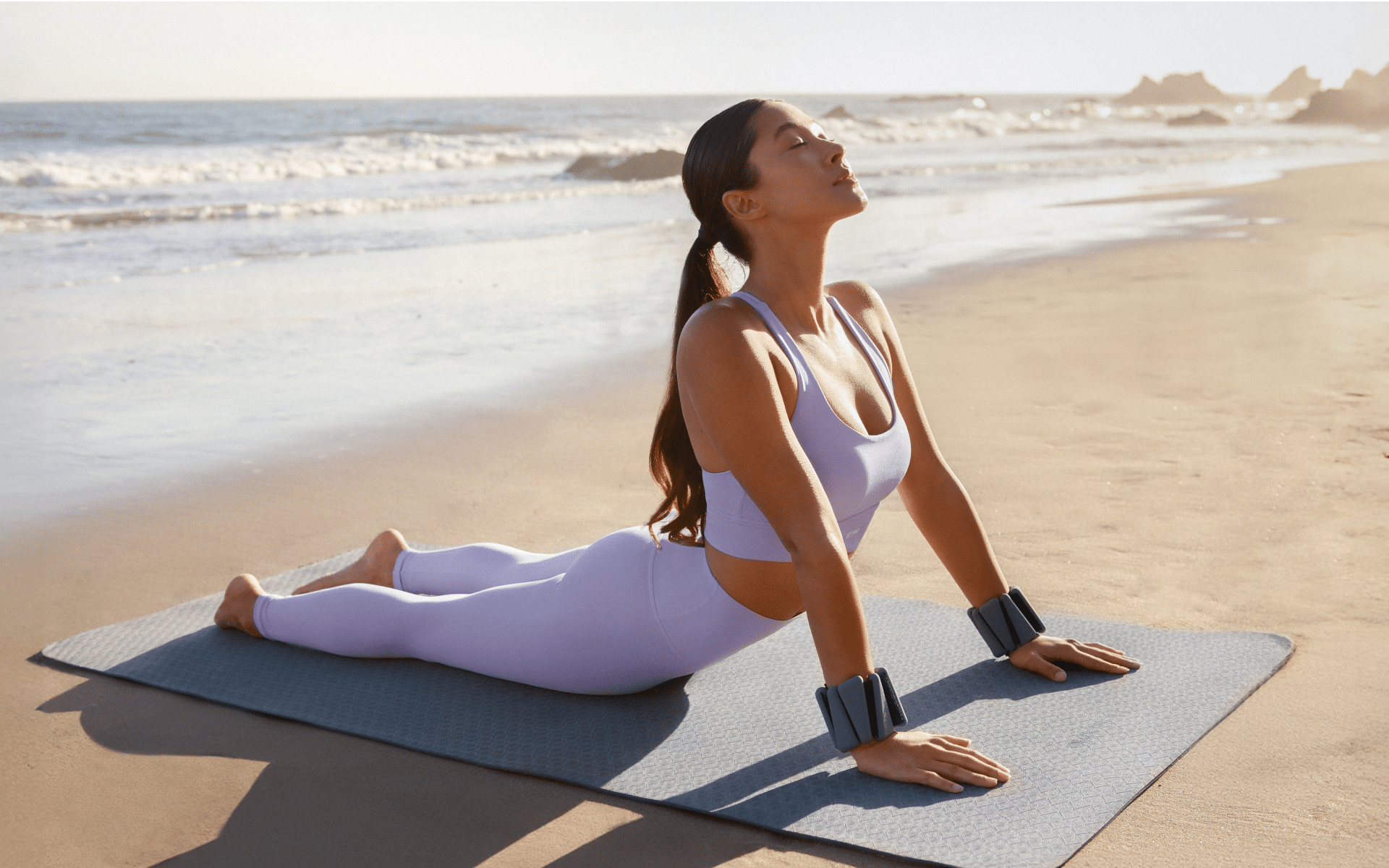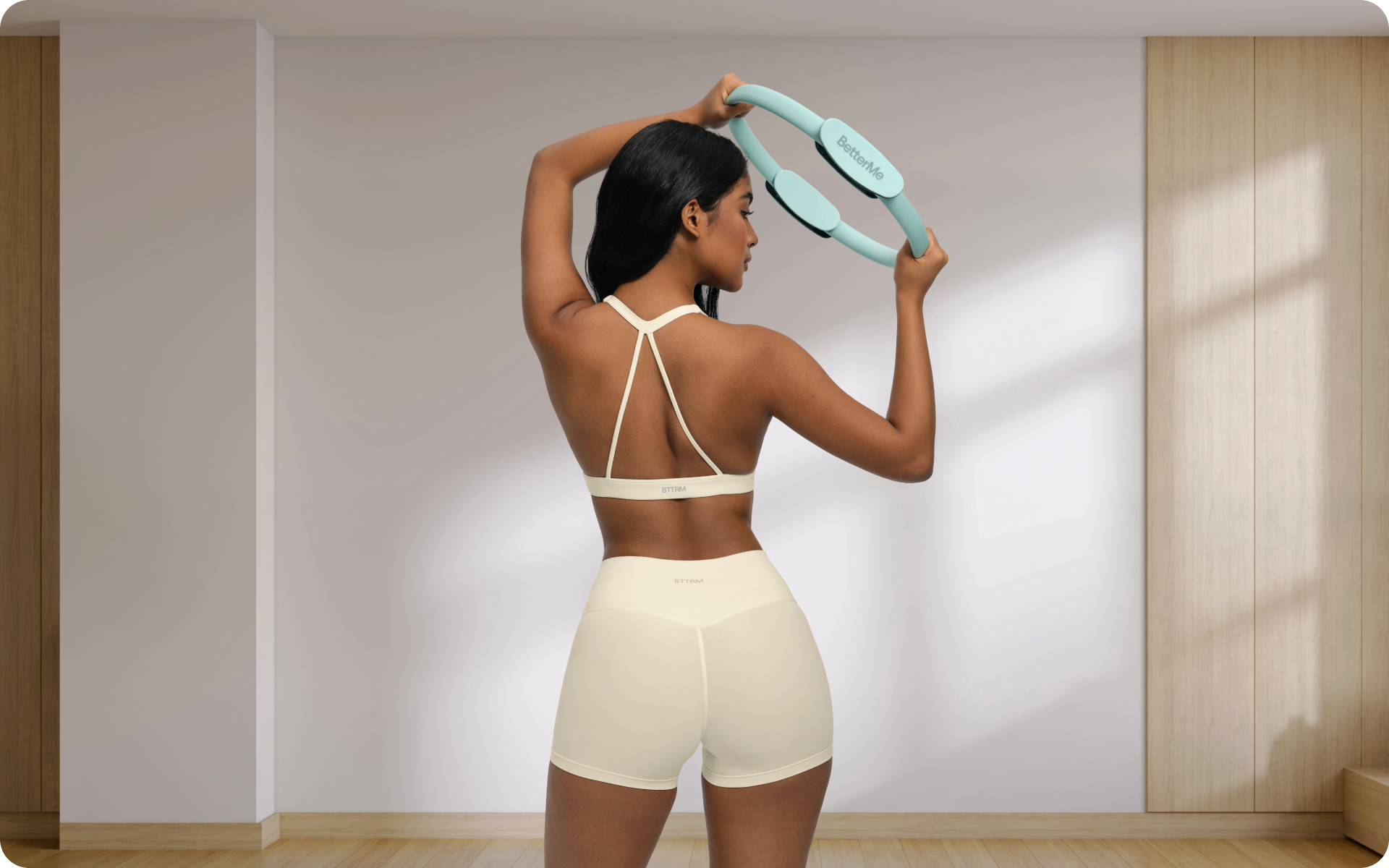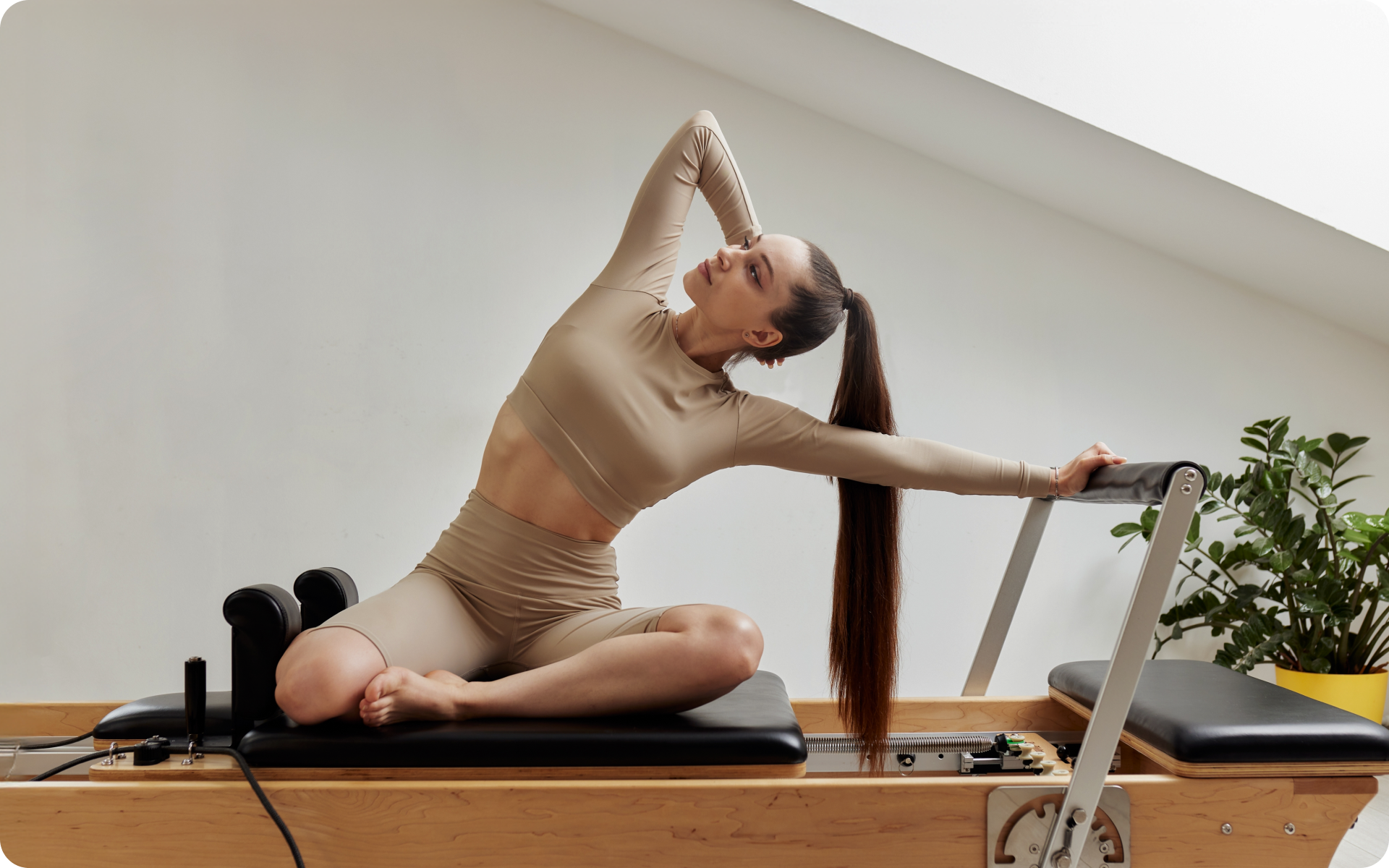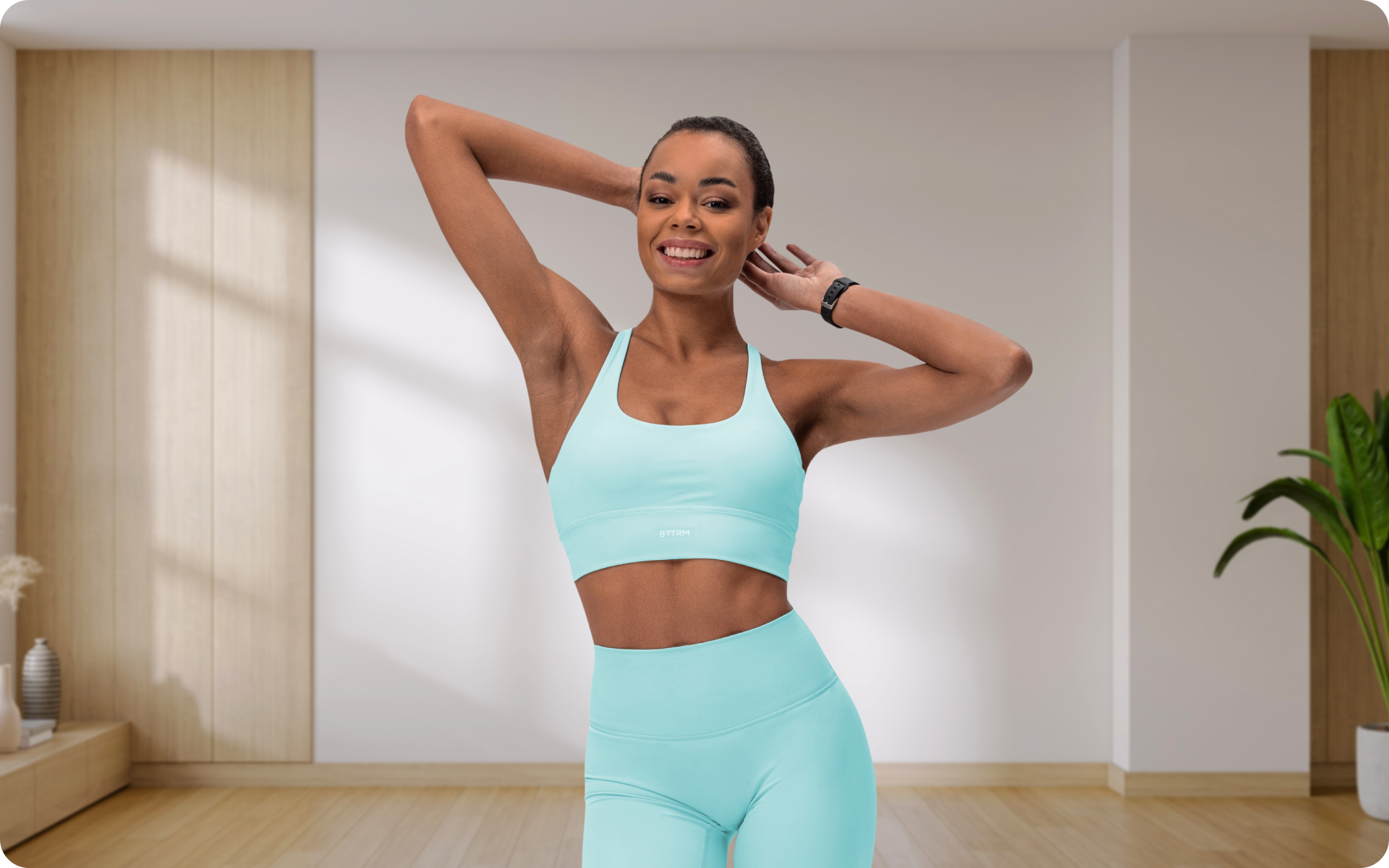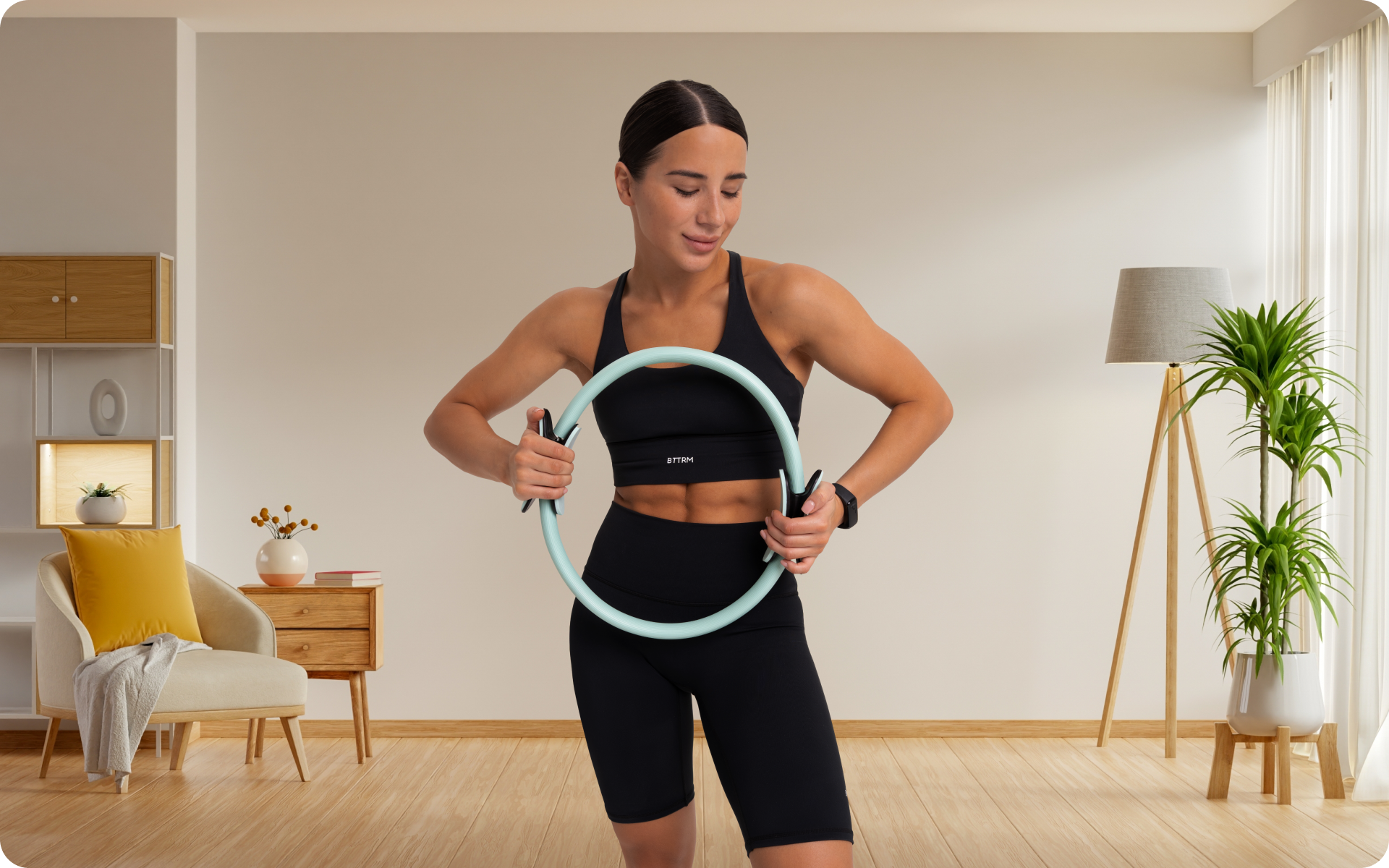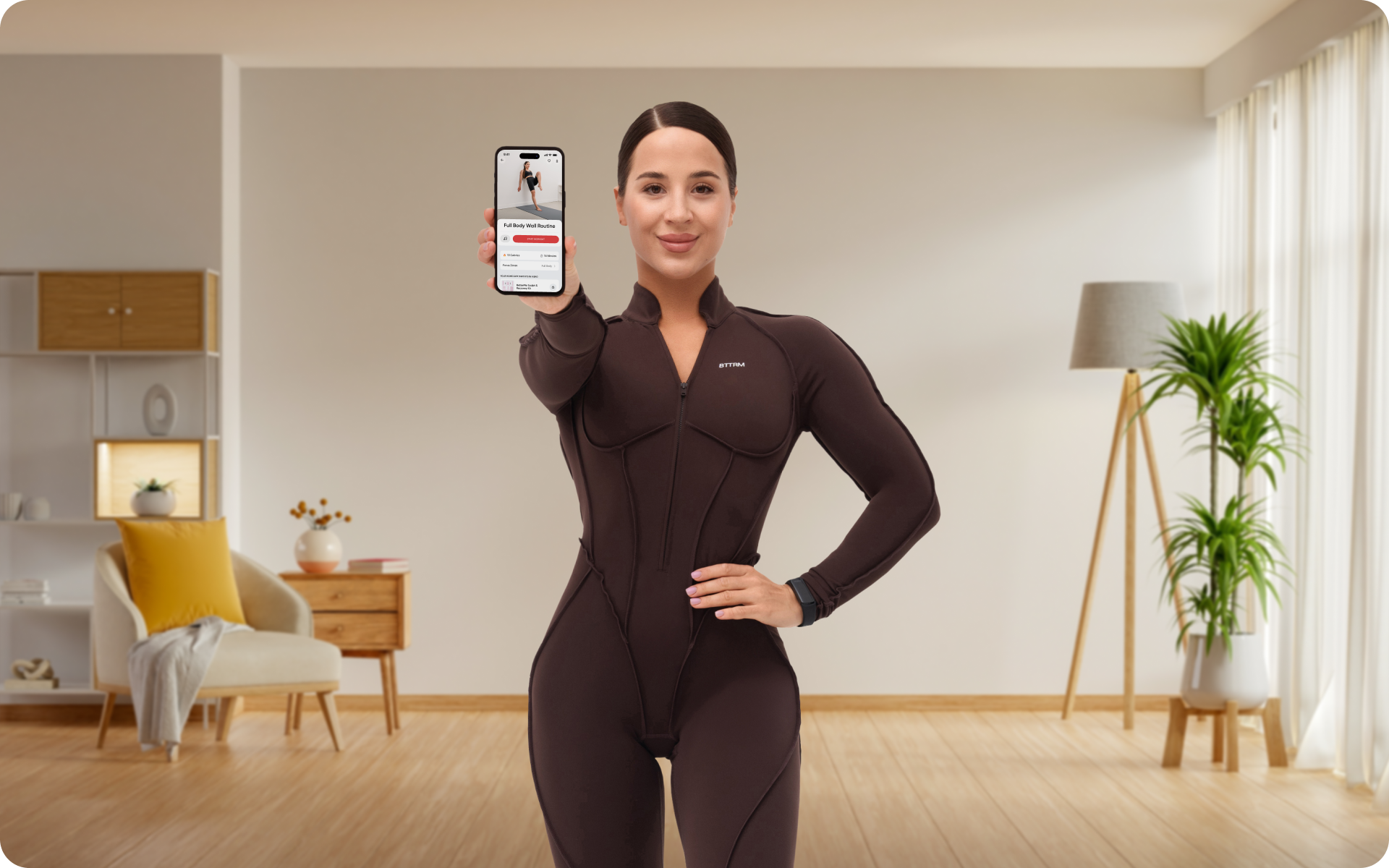In his foundational work, Joseph Pilates recommended performing a series of exercises to increase core strength, improve posture, and enhance flexibility. The modern practicing of Pilates involves more than just Pilates mat workouts. Wall units, reformer machines, and other equipment are all used to enhance the effects of the exercises.
However, going back to basics from time to time can be a refreshing reminder of the power of simplicity and the foundational principles that make Pilates so effective.
Pilates mat workouts serve as the foundation upon which other Pilates practices are built, offering fundamental movements and principles that carry over into more advanced techniques and equipment-based workouts.
By mastering mat Pilates, you can develop a solid understanding of Pilates principles, which can enhance your performance in other forms of exercise and daily activities.
Overall, mat Pilates plays a vital role in introducing and grounding practitioners in the principles and benefits of Pilates.
In this Pilates mat workout guide, we’ll give a 10-exercise sequence that aligns with the core principles of Pilates for beginners at home, while also ensuring that beginners can safely and effectively learn the basics.
Is Pilates Mat Workout Worth It?
Pilates mat workout is a fantastic workout for all – beginners and more experienced individuals alike. It may seem simple, but the exercises are designed to work your entire body and engage your core in every movement.
A full-body Pilates mat workout is based on six core principles that underpin the practice of Pilates:
- Breathing: This is essential for energizing and executing each movement with maximum power. Proper breathing helps keep the movements controlled and the mind focused.
- Concentration: Each exercise demands your full attention. The mind-body connection is key in Pilates to ensure the effectiveness of each movement.
- Control: Control rather than intensity is the goal. Each action is performed with muscular control, avoiding momentum and ensuring the right muscles do the work.
- Centering: Pilates is centered around the “powerhouse” of the body – the abdomen, lower back, hips, and buttocks are the focal point from which all movements emanate.
- Precision: There’s an emphasis on precision. The goal is to do one precise and perfect movement flow rather than several half-hearted segmented ones.
- Flow: Exercises are performed in a flowing manner with fluidity and grace that reflects a level of mindfulness and skill.
These principles guide the Pilates method and are designed to fuse the mind and body, to create a more balanced, and to suit every individual.
They serve as the foundation for all of the exercises in the workout, including the 10 basic movements you’ll learn next.
Our blog, How to Do Wall Pilates at Home, has a step-by-step tutorial for practicing Pilates with wall units.
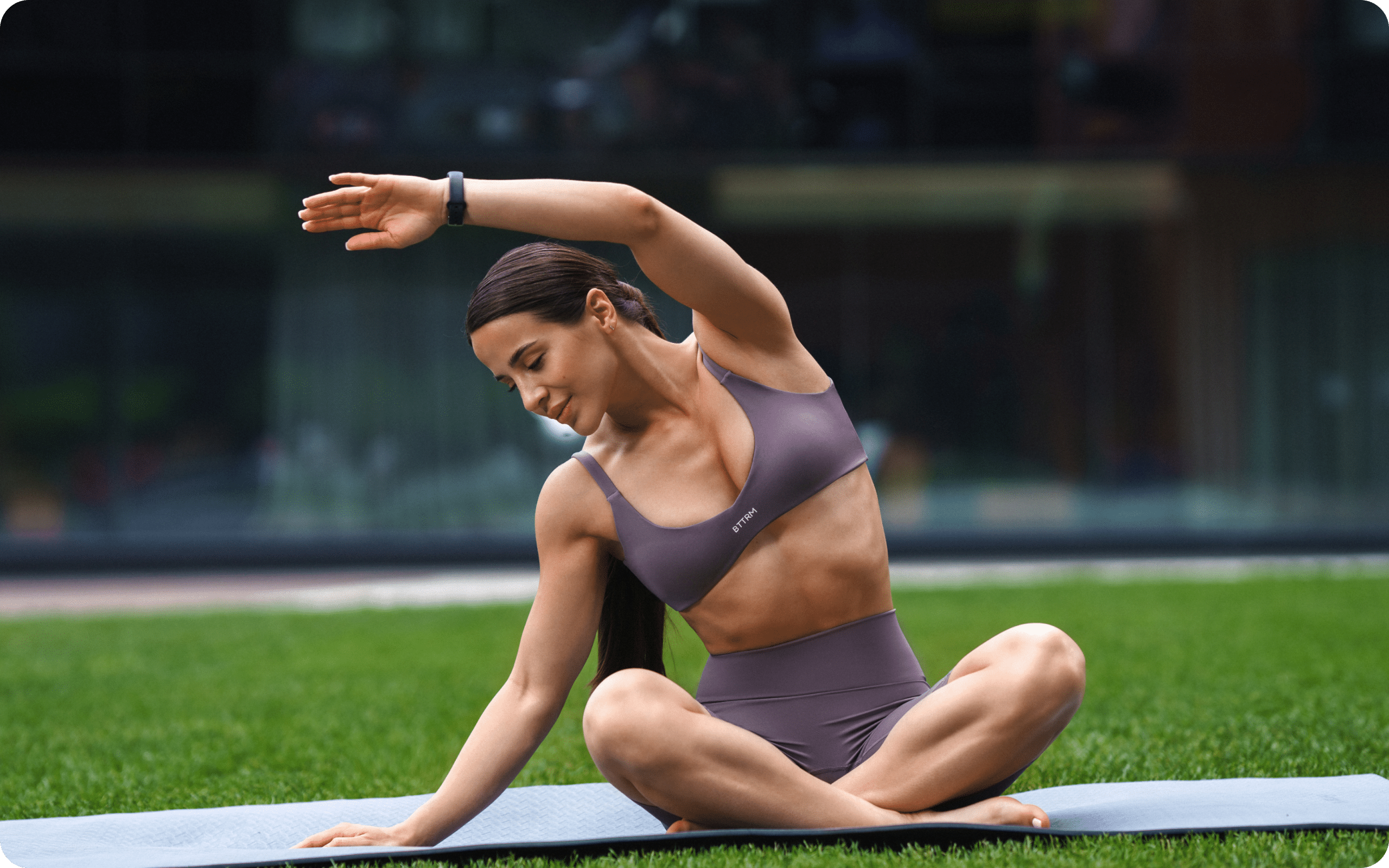
How Many Exercises Can You Do on a Pilates Mat?
For beginners who are looking to get started, it’s recommended to start with the basic movements listed below before progressing to more advanced exercises. As you build your strength and flexibility, you can slowly add more challenging movements to your routine.
Here are the 10 basic Pilates Mat Workout exercises for beginners:
The Hundred
The Hundred is a classic Pilates exercise that is designed to strengthen the core muscles and improve breath coordination.
By engaging your abdominals and focusing on your breathing, you can increase your lung capacity and stimulate the blood flow. This exercise is beneficial for correcting postural imbalances and boosting overall energy.
Steps for Performing The Hundred:
- Lie on your back with your legs in tabletop position, arms overhead, and palms facing up.
- Lift your arms, head, and chest, bringing your arms to the sides of your body, parallel to the mat, and straighten your legs forward (or keep them in tabletop for an easier version)
- Extend your arms and pulse them up and down in a small range of motion.
- Inhale for five arm pumps and exhale for five pumps, constituting ten pumps in total. Repeat this for 10 cycles until you reach 100 pumps.
You can also perform The Hundred with a soft ball between your thighs. This will add an extra challenge for the inner thigh muscles (adductors) and teaches you to engage the core muscles properly.
- Lying supine, legs in tabletop position, arms overhead, and palms facing up, the Pilates soft ball is placed between your thighs, just above knee level
- On your exhale, lift your head, neck, and chest, bringing your arms by the sides of your body. Extend your legs into a diagonal line and squeeze the ball (ring) between your thighs. Keep your inner thigh muscles working throughout the exercise while you pump your arms and breathe.
BetterMe is your fast-track ticket to a long-lasting weight loss! Tailor your fitness journey and maximize your results with just a couple of swipes!

The Roll Up
The Roll Up is a versatile Pilates exercise that focuses on mobility and flexibility of the spine. It targets the abdominal muscles and can improve digestion, which results in a renewed sense of energy and vitality.
Steps for Performing The Roll Up:
- Lie flat on your back with your arms extended over your head.
- With your legs straight, lift your arms and peel your spine off the mat on your exhale, one vertebra at a time.
- Reach toward your toes, inhale, and as you exhale, slowly roll back down onto the mat.
- Repeat this sequence for a set number of repetitions.
If your core muscles are not yet strong enough to perform the exercise smoothly without the momentum, you can use a long resistance bend for extra abdominal support.
- Place the band around the arches of your feet and hold onto the ends of it securely with both hands. Use the band as a support for a nice, smooth roll up and roll down.
The Roll-Over
The Roll-Over is a Pilates mat workout exercise that aims to stretch the lower back and hamstrings. It enhances core stability and helps with the prevention and rehabilitation of lower-back injuries.
Steps for Performing The Roll-Over:
- Start by lying flat on your back with your arms by your side.
- Inhale as you extend your legs toward the ceiling, maintaining a 90-degree angle at the hip.
- Exhale and roll your legs over your head while keeping your core engaged and arms grounded.
- Inhale as you dorsiflex your feet, separate them shoulder-width apart, and lower them toward the mat.
- Exhale as you slowly unroll and return to the starting position.
- Perform this movement in a controlled manner for a set number of repetitions.
The Single Leg Circle
The Single Leg Circle is a Pilates exercise that improves hip joint mobility and strengthens the thigh muscles. This movement also enhances stability in the pelvis and the core, promoting better balance and coordination.
Steps for Performing The Single Leg Circle:
- Begin by lying flat on your back with one leg extended along the mat and the other leg lifted toward the ceiling.
- Point your toes, inhale, and move the lifted leg in a circular motion, keeping your hips on the floor. Exhale for the next circle.
- Complete the circles in one direction for a set number of repetitions, then reverse the direction for the same number of reps.
- Make sure the rest of your body remains static and the movement is isolated to the hip and leg.
- Repeat the exercise with the opposite leg.
You can also use a long band to add resistance and target more specifically the muscles in the hips, thighs, and core.
- Loop a resistance band around the foot of your raised leg and hold the ends of the band securely in your hands.
- Engage your core muscles and stabilize your pelvis as you move your raised leg in circles.
Rolling Like a Ball
Rolling Like a Ball is a dynamic Pilates exercise that promotes balance, coordination, and spinal articulation. The smooth, controlled rolling motion massages the spine and stimulates the abdominal organs. In addition, this exercise challenges the core muscles and enhances concentration.
Steps for Performing Rolling Like a Ball:
- Sit on the mat with your knees bent toward your chest and your hands wrapped around your ankles.
- Balance on your sit bones, lift your feet off the mat, and tuck your chin slightly toward your chest.
- Inhale and roll back onto your shoulder blades, not touching your head to the mat.
- Exhale and use your abdominal muscles to roll back up to the starting position without letting your feet touch the ground.
- Repeat this rolling motion with control for a set number of repetitions.
You can also incorporate a soft Pilates ball to add variety and challenge to the exercise.
- Sit on the mat with your knees bent and feet flat on the floor, holding the Pilates ball between your knees. Perform the exercise, keeping the ball stable and slightly squeezed between your knees.
- Repeat the rolling motion for several repetitions while maintaining control and balance.
Using a soft Pilates ball adds an extra challenge to the exercise incorporating adductors into the process, requiring profound use of the abdominal muscles and providing greater stability and control.
Read more: Wall Pilates for Butt: A Quick Guide for Beginners
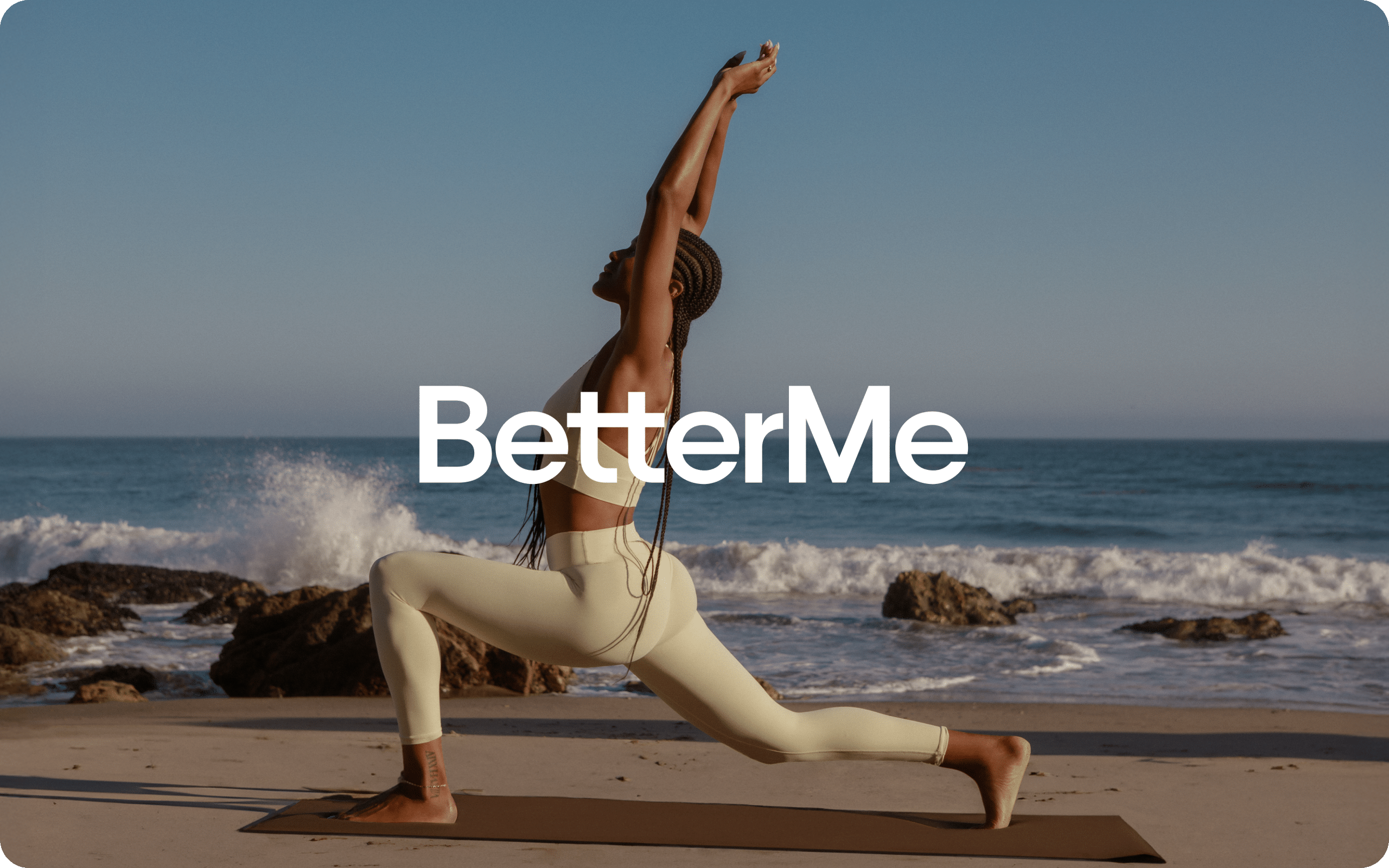
Single Leg Stretch
The Single Leg Stretch is a primary Pilates exercise that targets abdominal endurance and coordination. It helps teach stability of the torso while the arms and legs are in motion, thereby improving core strength and muscle tone.
Steps for Performing Single Leg Stretch:
- Begin by lying flat on your back and lifting both legs into a tabletop position.
- Raise your head and shoulders off the mat, and extend one leg out as you pull the other knee toward your chest. Place your inside hand on the bent knee and the outside hand on top.
- Inhale.
- Exhale as you switch legs in a smooth, fluid motion.
- Continue alternating legs for a set number of repetitions while keeping your core engaged and your lower back pressed into the mat.
Double Leg Stretch
Double Leg Stretch is an exercise that enhances core strength, coordination, and stamina. It intensely works the abdominals and helps maintain a strong center during movement, which is important for daily activities.
Steps for Performing Double Leg Stretch:
- Lie on your back with your knees pulled into your chest, and your head and shoulders lifted off the mat.
- Inhale as you extend your legs out in front of you and arms overhead, keeping your arms close to your ears.
- Exhale as you circle your arms around and hug your knees back into your chest.
- Keep your abdominal muscles pulled in tight to protect your lower back as you move through the exercise.
- Perform a set number of repetitions, focusing on fluidity and control throughout the movement.
You can place a soft ball between your knees to add an extra challenge to your inner thigh and core muscles.
In addition, you can perform the exercise while holding dumbbells in each hand. This exercise targets the abdominal muscles, particularly the rectus abdominis and obliques, while also engaging the arms, shoulders, and hip flexors. Using a dumbbell will add resistance to the arm movement, which increases the challenge for the upper-body muscles.
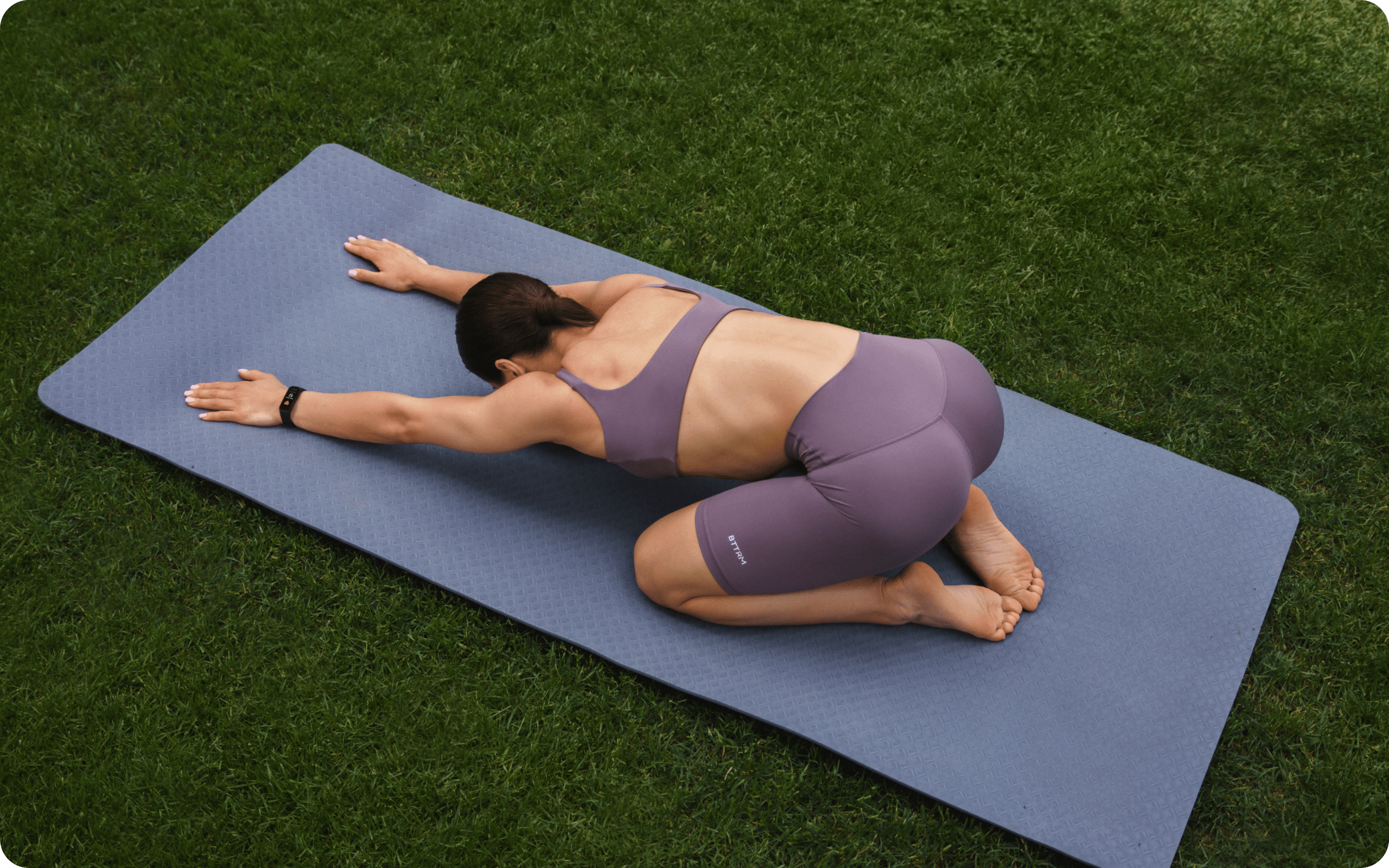
Spine Stretch Forward
Spine Stretch Forward is a fundamental Pilates mat workot movement that is designed to enhance posture by elongating and stretching the spine. This exercise increases flexibility in the back and hamstrings and helps relieve tension.
Steps for Performing Spine Stretch Forward:
- Sit up tall on the mat with your legs extended straight in front and slightly wider than your shoulders.
- Inhale and extend your arms straight out in front of you at shoulder height.
- Exhale as you slowly bend forward, curving your spine, and reaching your fingertips toward your toes.
- Inhale and stack your spine bone by bone back to the sitting position.
- Repeat this sequence for a set number of repetitions, making sure each movement is initiated from the waist.
Variation with a soft ball
Using a small Pilates ball behind your back helps maintain proper alignment of the spine during the Spine Stretch Forward exercise.
- Place a small Pilates ball between your lower back and the wall behind you. This will help maintain a connection with your lower back throughout the exercise.
- As you perform the Spine Stretch, use your core muscles to maintain the lower back-ball connection.
Open Leg Rocker
Open Leg Rocker is an advanced exercise that is focused on control and balance while increasing flexibility in the back and stretching the hamstrings. It also promotes a sense of alignment as the body moves through space.
Steps for Performing Open Leg Rocker:
- Begin in a seated position, holding your ankles, and balance on your sit bones with your legs extended upward, forming a V shape.
- Inhale and roll backward, maintaining the V shape, and stop before your neck or head reach the mat.
- Exhale as you roll back to the seated position, keeping your legs elevated and finding your balance.
- Repeat this movement several times, maintaining control and balance throughout the exercise.
While performing the exercise, you should keep your arms straight. However, you can slightly bend your knees. Initiate the roll back with flexion of your spine.
If you’ve mustered up the courage to crush your weight loss goal, let Betterme take the sting out of this demanding process. Our app will help you restructure your habits, remold your life and crank up your fitness results!
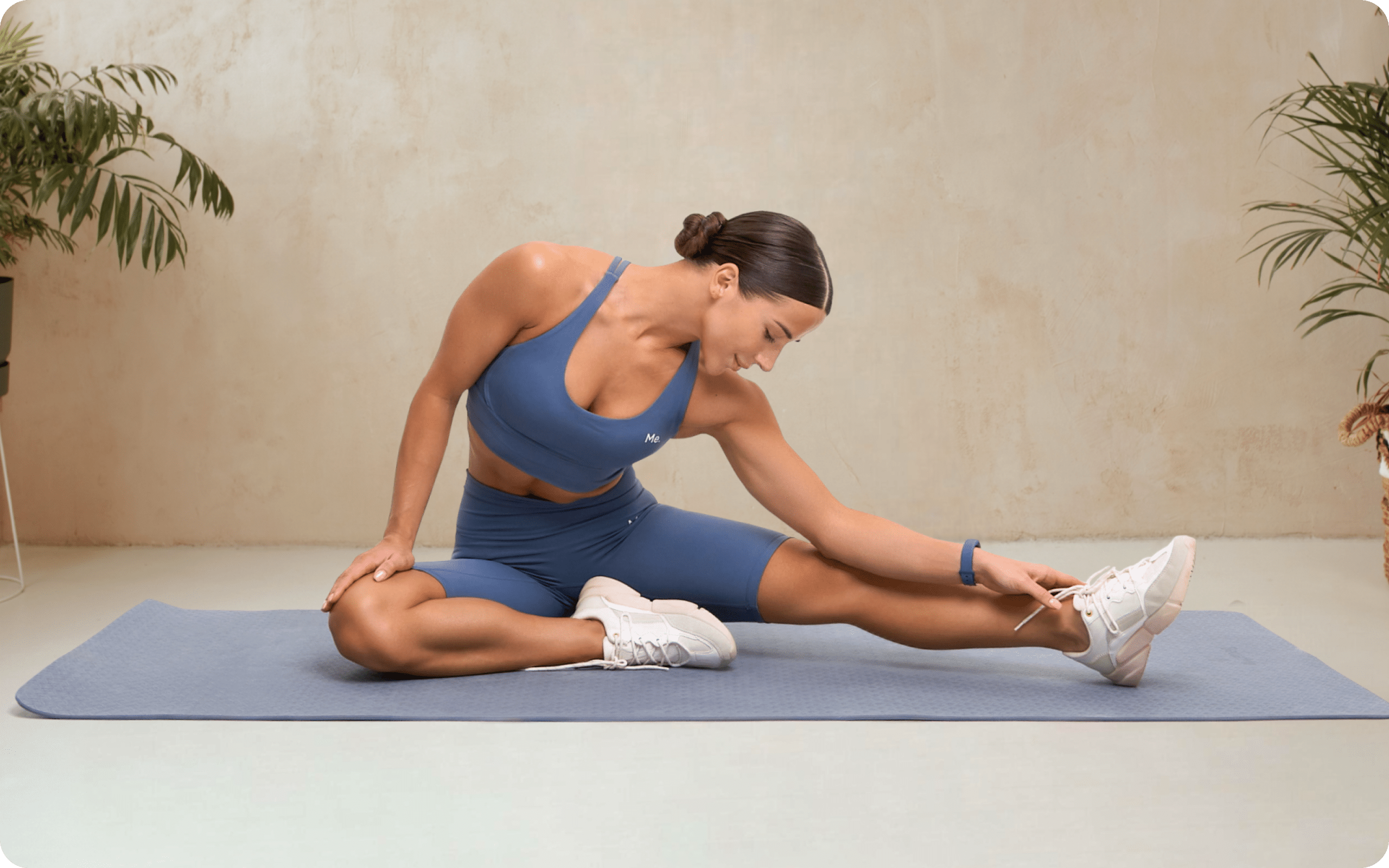
Corkscrew
The Corkscrew provides a rotational challenge to the core stabilizers, improving flexibility of the spine and strength of the obliques. It also fosters coordination and abdominal control.
Steps for Performing Corkscrew:
- Lie on your back with your arms firmly by your sides and your legs extended toward the ceiling.
- Start circling your legs to the right, bringing them down around to the left and back up while keeping your arms and shoulders pressed into the mat.
- Inhale as you start the circle to one side and exhale as you complete the circle to the other side.
- Focus on keeping your core tight and preventing your hips from lifting off the mat.
- Alternate the direction of the circles for a set number of repetitions, making sure the movement is smooth and controlled.
Using a Pilates soft ball between the ankles during the Corkscrew exercise adds an extra challenge and enhances the effectiveness of the workout.
Holding the Pilates ball between the ankles requires additional engagement of the inner thigh muscles, which are known as the adductors. This helps stabilize the legs and pelvis, enhancing control and precision in the movement.
The added resistance from squeezing the ball activates the core muscles even more, as the abdominals work to stabilize the spine and control the movement of the legs.
In addition, balancing the ball between the ankles challenges proprioception, which forces the body to recruit more muscles to maintain stability throughout the exercise. This can help improve overall balance and coordination over time.
Can You Get Results from Pilates Mat Workouts?
“If you faithfully perform a Pilates mat workout 4 times a week for 3 months in the order listed in Return to Life, you will experience physical, mental and spiritual vitality.” – Joseph Pilates
Mat Pilates is a versatile and effective form of exercise that brings a multitude of benefits to its practitioners. Here are some of the key advantages:
Improved Core Strength: Mat Pilates focuses on the deep stabilizing muscles of the abdomen and spine, which leads to better core strength and stability (4). A strong core supports a healthy back, improves posture, and allows for greater efficiency of movement (6).
Enhanced Flexibility: Through its range of motion in exercises, Pilates naturally extends and stretches the muscles, which promotes enhanced flexibility (3). This increased limberness can lead to a reduction in muscle stiffness and joint pain (2).
Increased Mind-Body Awareness: Pilates requires concentration and mindfulness, directing focus to the quality of movement, breathing, and alignment. This practice hones the connection between mind and body, which causes greater neural coordination and proprioception (5).
Better Posture: Regularly practicing Pilates leads to the development of muscular balance and alignment. Engaging the body’s powerhouse, which includes the abdominals, lower back, hips, and buttocks, helps correct postural imbalances and results in a more upright and balanced stance (5).
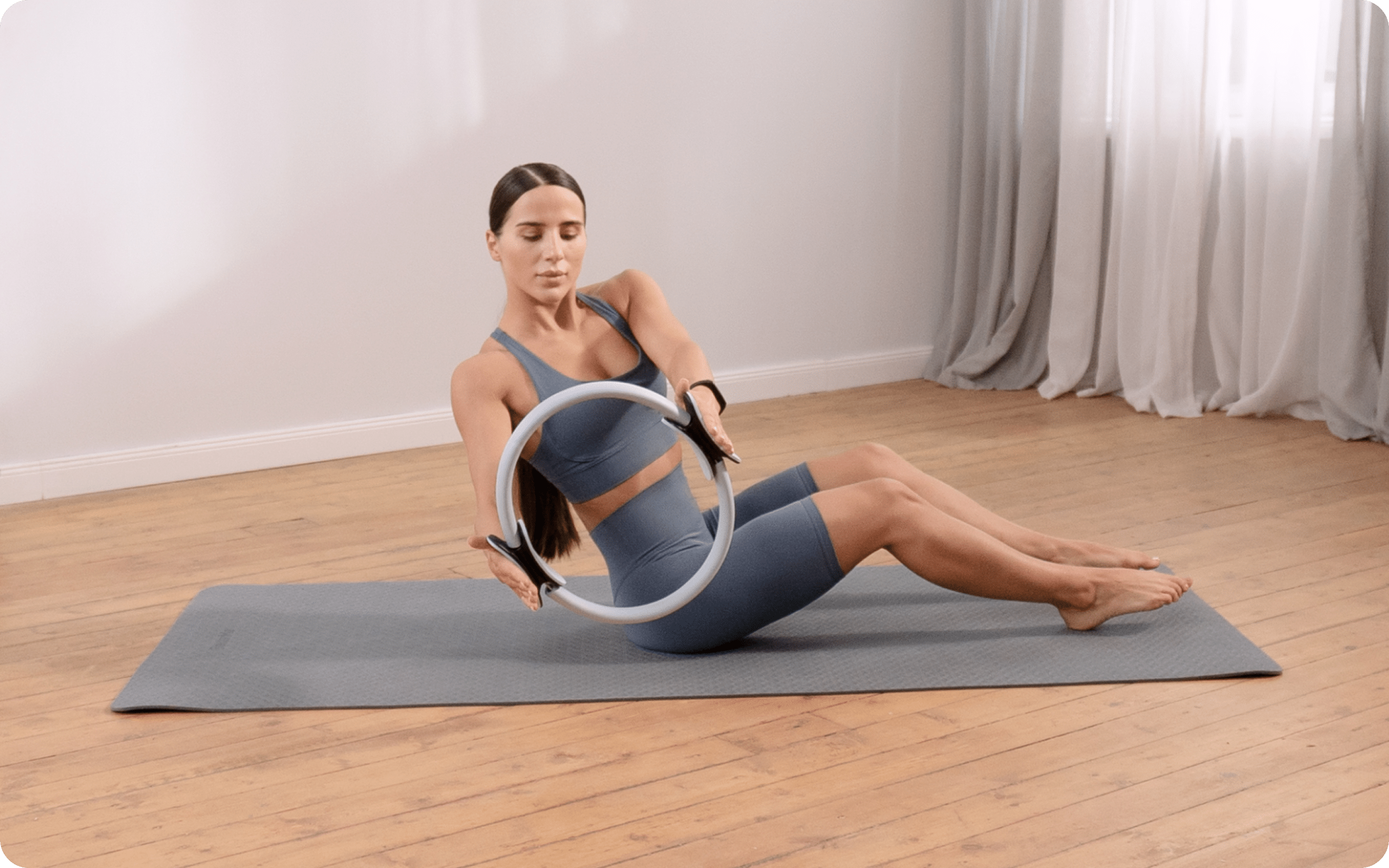
Improved Muscle Tone and Balance: By utilizing body weight and gravity to provide resistance, Pilates effectively tones the muscles, targeting the lower body and the core in particular. In addition, the balance exercises in Pilates enhance stability and coordination (3).
Low-Impact Exercise: Mat Pilates is gentle on the joints, which makes it an ideal workout for those who are looking for a low-impact fitness routine. This is particularly beneficial for individuals with arthritis or those recovering from injuries (1).
Stress Reduction: The mindful, meditative aspects of Pilates can act as a stress reliever. Its emphasis on deep, controlled breathing helps trigger the body’s relaxation response, which reduces stress and promotes a sense of calm (5).
Increased Energy Levels: Regular Pilates practice can lead to increased circulation and improved endurance. Its focus on deep, healthful breathing is particularly energizing and helps invigorate the mind and body (5).
Adaptability to Many Fitness Levels and Needs: Whether you’re a beginner or an advanced athlete, Pilates exercises can be modified to provide either a gentle strength training program or a challenging workout. It’s suitable for everyone, from seniors to professional athletes (3).
These benefits combine to create a comprehensive exercise system that promotes overall health and well-being. Therefore, mat Pilates is not just about physical fitness, it’s about creating harmony and balance in the body, which can translate into everyday life.
Read more: Does Wall Pilates Work? Discover Why Wall Pilates is the New FitTok Hype
Does At-Home Mat Pilates Work?
Yes, at-home mat Pilates can be just as effective as a workout that is performed in a studio or gym setting.
Here are some tips to make your at-home mat Pilates practice successful:
- Start with the basics: It’s important to learn the fundamental exercises before you move on to more advanced ones. Start with the basic exercises and build on them as you progress.
- Find a suitable space: Make sure you have enough room to lie down on your mat with your arms and legs extended. Avoid any potential obstacles or distractions in your workout area.
- Use proper form: Pay attention to your body’s alignment and engage the correct muscles during each exercise. Focus on the quality of movement rather than speed or number of repetitions.
- Commit to consistency: As with any exercise routine, consistency is key. Aim to practice Pilates at least 3-4 times a week to achieve the best results.
- Listen to your body: If something doesn’t feel right, don’t push through it. Modify or skip an exercise if necessary to prevent injury.

Is It Necessary to Have a Pilates Mat?
It’s not necessary to have a Pilates mat specifically, but it is important to have a designated space for your practice. The surface should be comfortable enough for you to lie down and perform exercises without slipping or experiencing discomfort. A yoga mat can also serve as a suitable alternative. However, it’s important to keep in mind that a Pilates mat is generally thicker than a yoga mat (with the aim of protecting the joints), so it may be necessary to pad the mat you have with towels.
If you’re practicing at home and don’t have access to a mat, you can lay a towel or blanket down to provide some cushioning and prevent slipping. However, it’s recommended that you invest in a Pilates mat, as they are specifically designed for this type of workout and offer more support and stability.
Having your own mat can also be more hygienic, particularly if you’re sharing equipment at a studio or gym.
Is There a Difference Between a Yoga Mat and a Pilates Mat?
While both yoga and Pilates Mats are designed to provide a comfortable surface for floor exercises, there are some key differences between the two:
- Thickness: Pilates mats tend to be thicker than yoga mats. This is because Pilates involves more lying-down exercises that require extra cushioning for comfort and support.
- Stickiness: Yoga mats are typically stickier than Pilates mats, as they’re designed to provide grip for standing poses. Pilates mats don’t require as much grip as most exercises are performed lying down.
- Material: Yoga mats are normally made from natural materials such as rubber or cotton, while Pilates mats can be made from a variety of materials, including PVC and foam.
Our Wall Pilates Equipment guide has more information on the different types of Pilates mats and how to choose the right one for your practice.
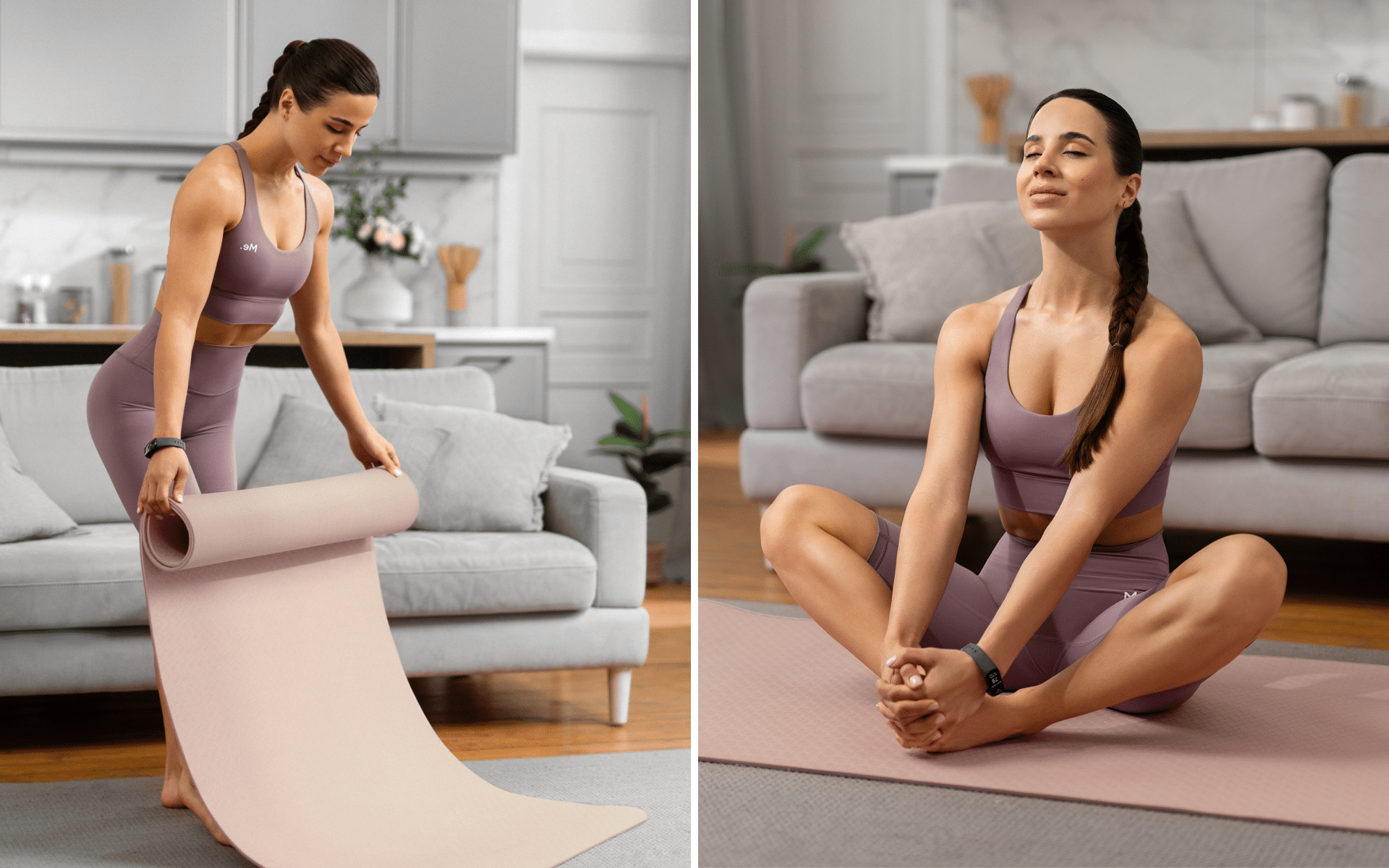
FAQs
Is it OK to do mat Pilates every day?
It’s safe to do mat Pilates every day, as long as you listen to your body and practice proper form. However, it’s recommended to have at least one day of rest every week to allow your muscles time to recover. It’s also important to vary your routine and incorporate other forms of exercise for a well-rounded fitness regimen.
What is the best thickness for a Pilates mat?
A mat that is 1/4 inch thick will provide enough cushioning and support for most Pilates exercises. However, if you have sensitivity or discomfort in your spine or joints, you may want to opt for a thicker mat.
What can I use instead of a Pilates mat?
A yoga mat or even a towel or blanket can be used as an alternative to a Pilates mat. However, if you regularly practice Pilates at home, it’s recommended that you invest in a proper mat for better support and stability.
What size mat do I need for Pilates?
A standard mat size for Pilates is usually around 24 inches wide and 72 inches long. However, there are also longer and wider options available for taller individuals or those who prefer more space during their practice. It’s important to choose a mat that allows you to fully stretch out and move comfortably in every direction.
Can I wash my Pilates mat?
Yes, most Pilates mats can be hand-washed with mild soap and water. It’s important to follow the specific care instructions provided by the manufacturer. If you’re using a mat at a studio or gym, it’s recommended that you bring your own towel or use a wipe before and after each use for hygiene purposes.
The Bottom Line
A Pilates mat workout can enhance your at-home practice and provide a comfortable surface for your workouts. However, if you don’t have access to a mat, there are alternative options available.
Remember to always prioritize proper form and listen to your body during Pilates exercises.
DISCLAIMER:
This article is intended for general informational purposes only and does not serve to address individual circumstances. It is not a substitute for professional advice or help and should not be relied on for making any kind of decision-making. Any action taken as a direct or indirect result of the information in this article is entirely at your own risk and is your sole responsibility.
BetterMe, its content staff, and its medical advisors accept no responsibility for inaccuracies, errors, misstatements, inconsistencies, or omissions and specifically disclaim any liability, loss or risk, personal, professional or otherwise, which may be incurred as a consequence, directly or indirectly, of the use and/or application of any content.
You should always seek the advice of your physician or other qualified health provider with any questions you may have regarding a medical condition or your specific situation. Never disregard professional medical advice or delay seeking it because of BetterMe content. If you suspect or think you may have a medical emergency, call your doctor.
SOURCES:
- Breaking Down the Benefits of Pilates (2021,hss.edu)
- Improving Flexibility (2022,va.gov)
- Pilates – health benefits (2022,betterhealth.vic.gov.au)
- Pilates to Improve Core Muscle Activation in Chronic Low Back Pain: A Systematic Review (2023,nih.gov)
- The Impacts of Pilates and Yoga on Health-Promoting Behaviors and Subjective Health Status (2021,nih.gov)
- The real-world benefits of strengthening your core (2012,harvard.edu)

